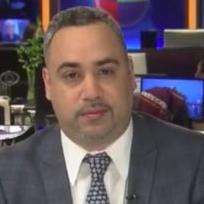by Eli Valentin (March 31, 2017)
 For the first time in history, there are more Latino voters in New York City than African Americans. In fact, Latinos now account for 23% (977,514) of all registered voters in NYC (4,281,946) and they are a quarter (735,641) of all registered Democrats (2,942,337), according to data from Prime New York’s voter analysis.
For the first time in history, there are more Latino voters in New York City than African Americans. In fact, Latinos now account for 23% (977,514) of all registered voters in NYC (4,281,946) and they are a quarter (735,641) of all registered Democrats (2,942,337), according to data from Prime New York’s voter analysis.As the largest ethnic group in the city – and the entire United States – the Latino presence in New York is palpable: from the store-front taquerias and cuchifritos, to the salsa and merengue beat in the streets, to the baseball and soccer stars that dominate our airwaves.
This presence has also been felt electorally, but, until now, the Latino voting explosion has not increased their political representation. In fact, Latino-majority districts are now under direct threat from the drawing of specific districts, and the gentrification of traditionally Latino neighborhoods such as El Barrio (East Harlem) and Loisaida (the Lower East Side).
In Loisaida, the 2nd Council District has been represented by a Latino/a for almost thirty years. Though currently represented by Rosie Mendez, real estate development and gentrification has created a spike of younger white voters – who now outnumber Latinos by over 12,000 registered voters.
Other city districts do not face this direct threat to Latino political representation, but if the current demographic dynamics continue, it will become a widening reality.
Districts that have experienced a drastic shift include the 38th Council District, currently represented by Carlos Menchaca. On a larger scale the 7th Congressional District, which contains some of the 38th Council District, is showing this same influx of younger white voters, and many of them are not familiar with the incumbent Rep. Nydia Velazquez.
In spite of these electoral changes, the impact of Latinos cannot be ignored by future candidates, incumbents, or anyone. Some recent elections make this point, and very dramatically.
The last time a Latino topped the ticket in a municipal election was in 2005, when Fernando Ferrer won the mayoral Democratic primary. In that election, Latinos already constituted a quarter of the entire Democratic electorate, and over 90,000 Latinos voted in the primary. In 2013, the year in which Mayor de Blasio won his election, we saw a decline in the percentage of Latinos voting, but an actual increase in the actual number of Latinos who turned out. The increase totaled over 20,000 new voters, for a total of over 111,000 Latino votes in 2013. This increase occurred despite the absence of any Latino citywide candidate in that year. (Data based on Prime New York data and my own analysis.)
Current efforts to register more Latinos to vote and the rise of younger and active Latino community leaders will undoubtedly lead to greater Latino voter participation. My own statistical modeling and data analysis shows as many as 40,000 additional Latinos potentially voting in the upcoming 2017 New York City primary. Any candidate who ignores this powerhouse voting bloc – from the mayor on down – will do so at their peril.
In 2017 every candidate must be aware of, and sensitive to, the issues that affect Latinos in New York. Those issues can no longer be taken for granted. As a dominant citywide voting bloc, Latinos must be placed front and center in any policy or electoral agenda.
The recognition of Latino issues is not merely ethical. It is also good politics, because along with their growing electoral power, Latinos are developing a memory. They will remember who has taken them seriously, and who has not. Every elected official in New York, every current and future politician, should remember this fact.
Eli Valentin is a Democratic consultant and pastor of the Iglesia Evangelica Bautista in New York City. He is a frequent political analyst on Univision and NY1’s Inside City Hall. On Twitter @EliValentinNY. He can also be reached at[email protected].
